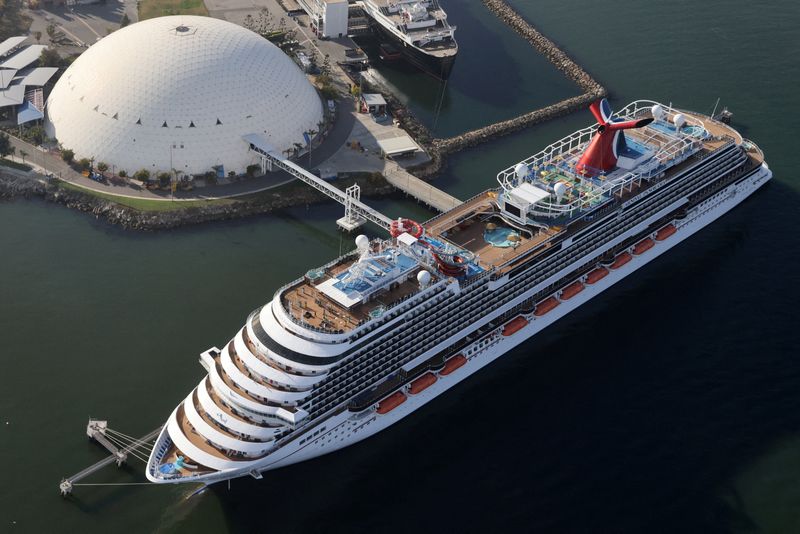Carnival forecasts lower quarterly profit as higher costs bite
2023.06.26 11:53

© Reuters. FILE PHOTO: A Carnival cruise ship is docked, amid the coronavirus disease (COVID-19) pandemic, in Long Beach, California, U.S., April 7, 2021. REUTERS/Lucy Nicholson/File Photo
By Ananya Mariam Rajesh and Juveria Tabassum
(Reuters) -Carnival on Monday forecast third-quarter adjusted profit marginally below estimates as the cruise operator battles higher labor and fuel costs while spending more on marketing, sending its shares down about 10%.
Carnival (NYSE:) has increased marketing spend since Josh Weinstein took charge as CEO in August last year, as it seeks to gain an edge over its competitors including Norwegian Cruise Line (NYSE:) Holdings.
Cruise liners have seen labor costs rise as they have had to add staff to manage higher occupancy levels at a time when a strong labor market has driven up wages.
This along with a slower-than-expected drop in inflation with respect to port expenses, freight, crew travel has pushed the company to raise its cost forecast, Chief Financial Officer David Bernstein said.
Carnival, however, lowered its annual loss forecast banking on higher ticket prices and U.S. customers including the younger population shelling out money on novel services such as cruise travel even as they cut spending on non-essential goods.
M Science analyst Michael Erstad said the company’s forecast suggests that the robust demand trend would continue, while adding that Monday’s share performance, in part, reflected the higher cost outlook.
Carnival shares have surged nearly 80% in the past two months on resurgent demand for cruises.
The company’s cash from operations and adjusted free cash flows were positive in the second quarter of 2023, and it expects the trend to continue during the second half of the year.
The mid-point of the company’s third-quarter adjusted profit per share forecast of 70 cents to 77 cents, was below analysts’ average estimate of 76 cents, according to IBES data from Refinitiv.
Carnival now expects adjusted annual loss per share between 8 cents and 20 cents, compared with its earlier forecast of a loss per share of 28 cents to 44 cents.
The company beat second-quarter revenue estimates and posted a smaller-than-expected loss.








